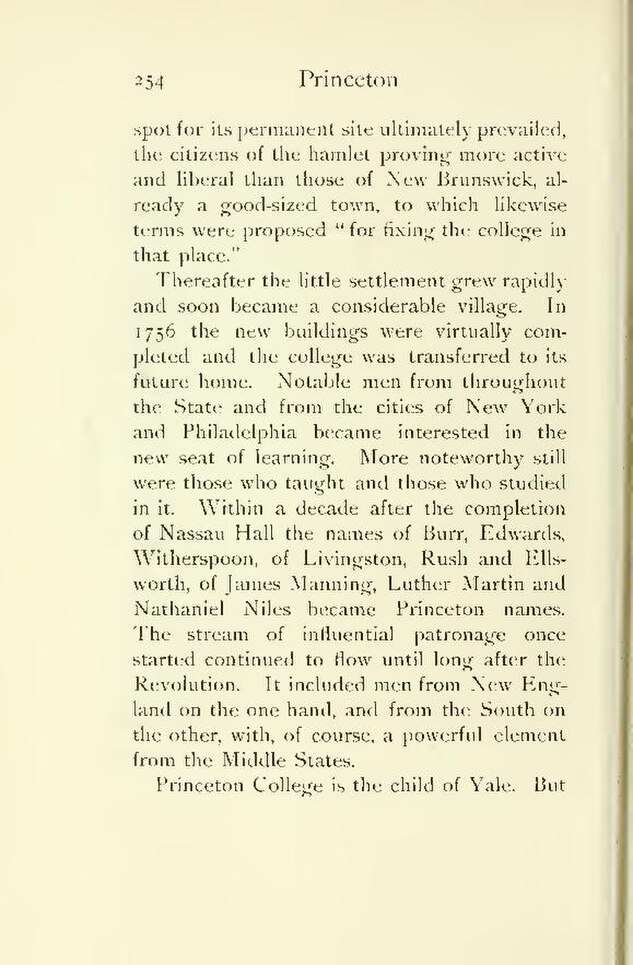spot for its permanent site ultimately prevailed, the citizens of the hamlet proving more active and liberal than those of New Brunswick, already a good-sized town, to which likewise terms were proposed "for fixing the college in that place."
Thereafter the little settlement grew rapidly and soon became a considerable village. In 1756 the new buildings were virtually completed and the college was transferred to its future home. Notable men from throughout the State and from the cities of New York and Philadelphia became interested in the new seat of learning. More noteworthy still were those who taught and those who studied in it. Within a decade after the completion of Nassau Hall the names of Burr, Edwards, Witherspoon, of Livingston, Rush and Ellsworth, of James Manning, Luther Martin and Nathaniel Niles became Princeton names. The stream of influential patronage once started continued to flow until long after the Revolution. It included men from New England on the one hand, and from the South on the other, with, of course, a powerful element from the Middle States.
Princeton College is the child of Yale. But
